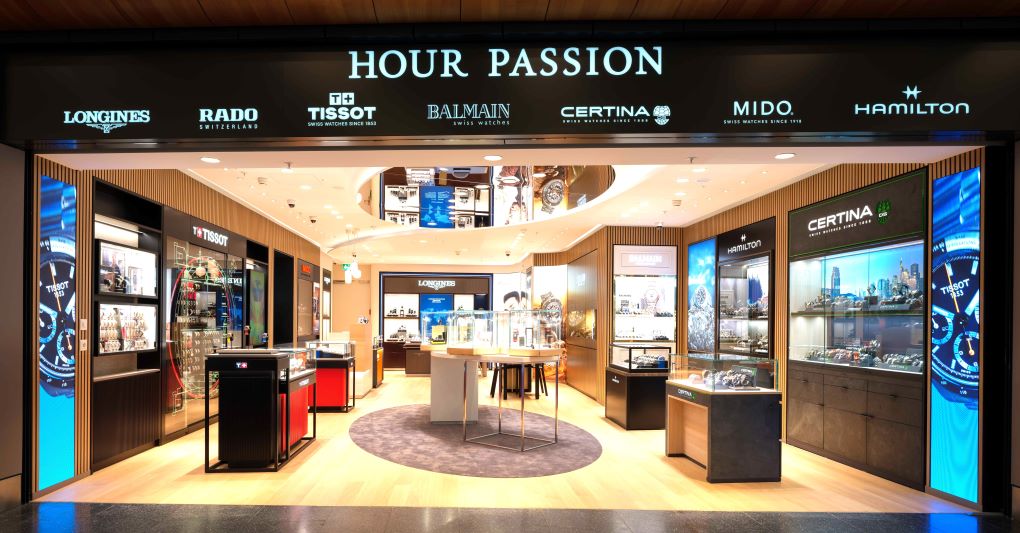AUSTRALIA/NEW ZEALAND. Ivo Favotto, a Sydney-based executive and company owner who has worked for all three stakeholders in the Trinity ecosystem, presents his latest commentary and figures on the gradual re-emergence of airport commercial activities in Australia and New Zealand against the backdrop of a global pandemic now stretching into its third year.
Favotto owns and runs The Mercurius Group, a consultancy focused on industry research, consultancy and benchmarking studies, as well as operating his own destination merchandise supply business.
In the latest edition of his unique monthly report tracking the reopening levels of an initial, pre-pandemic 832 travel retail outlets in airports across Australia and New Zealand, Favotto reports another new high for the reopening of stores across the pandemic period. However, dwell times have been cut by passenger processing issues as airports struggled to cope with staff shortages. This has limited the positive impact of the traffic boost, he says.
Due to a confluence of public holidays in April, most Australians were able to have an 11-day vacation for just four days of annual leave recently, writes Ivo Favotto. It started with the Easter holidays on 15 April and ended on 25 April with the ANZAC day holiday (a day of remembrance across Australia and New Zealand for those lost during wars).

Destination Gold CoastConsumer services and commercial revenue streams will be the focus of a pioneering event to be held on Australia’s beautiful Gold Coast this July. |
In some states (e.g. Queensland), another public holiday on 2 May (Labour Day) allowed people to get an incredible 18-day vacation for just eight days of annual leave. I guess this is why some people call Australia the lucky country!
The amazing vacation opportunity across the country triggered an amazing rush by Australians to get back on planes – for domestic travel at least. Many airports reported their busiest days since the start of the COVID-19 pandemic, with some airports – particularly those serving tourist locations – even exceeding 2019 traffic levels.
After two very quiet years however, the surge in passenger numbers around the country caused chaos with queues measured in hours not minutes for many processing functions.
Australia’s workforce, missing more than two years’ worth of immigration, temporary work permit holders and overseas students, together with isolation requirements for the COVID positive and family contacts couldn’t keep up.
Check-in desks and security screening points were chronically understaffed, with Sydney Airport taking the extraordinary step of deploying its office staff to help out in the terminals over the holiday period. It was not the only airport to do so.
According to The Mercurius Group’s 25th monthly report tracking the recovery of travel retail in Australia and New Zealand from the COVID-19 pandemic, 69% of travel retail stores were reopened April 2022. That’s the eighth straight month of improvement and a post pandemic high.
The proportion of stores open across both F&B (69%) and speciality (69%) have now equalised, with the latter helped by stores starting to reopen in international terminals as well as domestic terminals.
Although passenger numbers approached and exceeded the equivalent period in 2019 in many locations, 31% of stores remained closed as some operators chose to soak up capacity within previously open outlets by extending their staffing and opening hours.

While 82% of domestic stores (both F&B and specialty) have now reopened, 45% of international terminal stores have recommenced trading – up from 38% in March 2022. That represents the single biggest monthly improvement in the rate of stores reopening in almost two years and a post pandemic high.
The surge in travel gave travel retailers around the country a much-needed boost, even though they too struggled with chronic staff shortages and supply chain rigidities.
These factors, together with dwell times being chewed by processing queues at check-in and security, meant that some retailers didn’t experience as much as uplift in trade as they may have been expecting given the surge in passenger numbers. But at least there was some improvement.
The month of May will be an interesting month for operators as they start to settle into the “new normal” without the benefit of super holiday periods. Encouragingly, traffic at international terminals is starting to recover as overseas airlines return and passengers get more comfortable with COVID-related travel risks.

While operators continue to struggle with staff absences, isolation requirements are now easing and there are some hints that labour shortages are starting to ease.
The remaining 31% of sites to reopen may prove to be the most difficult (or at least the slowest) to achieve. Some stores are closed due to refits and there has also been a departure of some traditional high street retailers from airports. The challenge to airport leasing executives will be to resell their vacancies to these retailers. Future passenger growth and stability will help.
Conversely, traditional airport retailers and F&B operators are proving their confidence in the market with recent F&B and travel essentials tenders attracting strong competitive interest and healthy yields for airports. Material passenger decline risk-sharing has been a key contributing factor.













